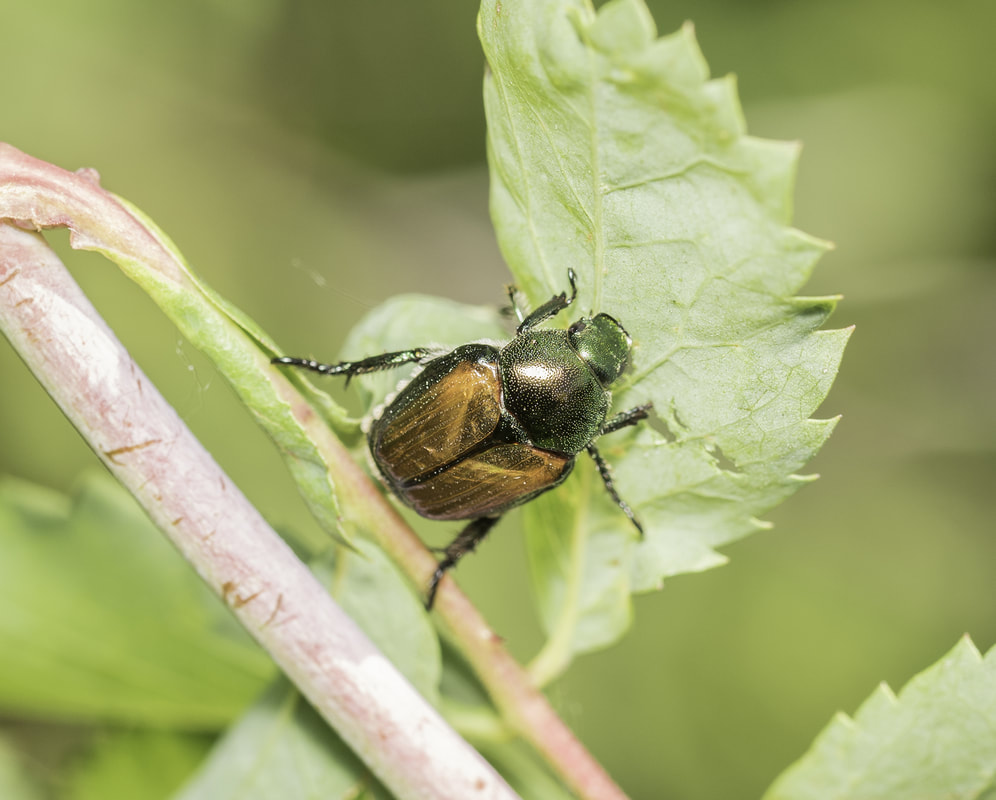|
PLEASE NOTE: THIS POST IS AN ARCHIVE FROM THE 2017-2018 PROJECT YEAR.
After treating the areas of Cedar Mill and Bonny Slope in Washington County this past spring, Oregon Department of Agriculture makes plans for Japanese beetle battle part 2. A total of just over 23,000 destructive Japanese beetles were caught in Washington County this year. “The threat to Oregon is more imminent now because of the numbers of beetles we are seeing and the fact that we have seen damage to plants within the epicenter of the insect’s population, so it’s not hypothetical, it’s for real,” says ODA’s Burfitt, a veteran of successful Japanese beetle eradication projects in Utah. “However, I’m still optimistic about eradicating our current infestations. As long as the community continues to support the 5-year project, I know we can get this done.” Find out more about the project: Oregon Department of Agriculture will be working with partners and the community throughout the winter and spring to make plans for year two of the proposed eradication project. Read up on year one and what that means for year two: https://wp.me/p52oQB-oP Available Resources
0 Comments
PLEASE NOTE: THIS POST IS AN ARCHIVE FROM 2017. Below is a sample of the plant damage that has been seen in the Cedar Mill area in the summer of 2017 as a result of the infestation of Japanese beetles. Damage on Rosa sp. from the Japanese Beetle. Photograph by Oregon Department of Agriculture. Japanese beetle caught feeding on a flower. Photograph by Oregon Department of Agriculture. Live beetle bites into unidentified plant leaf. Photograph by Oregon Department of Agriculture.
PLEASE NOTE: THIS POST IS AN ARCHIVE FROM 2017. Japanese beetles in floral pheromone traps in late July, 2017 in the Cedar Mill neighborhood. Photograph by Chris Hedstrom, ODA. View all current catches on the interactive map, here: As far as Japanese beetle habits go, the beetles are at the tail end of peak flight—which means there are many beetles flying—and it is important to use best management practices when disposing of the green waste and yard debris generated from this area.
Currently, the Oregon Department of Agriculture has detected over 12,000 adult beetles from our detection grids. Roughly 2% of these beetles have been found outside of the treatment area. The core of the infestation is located at the center of the treatment area, west of Saltzman Rd and Hartford St, in the Cedar Mill area. Some areas have a sporadic distribution of traps with beetles, possibly the result of beetles being transported on vehicles. However, one trapping area captured beetles consistently throughout a new area, which could indicate low-level infestation and may warrant expansion of the treatment and quarantine boundary in 2018. We will begin to analyze the information from this year’s surveillance activity to help us develop the 2018 response plan for year two of the eradication project, which begins spring of 2018. The Oregon Department of Agriculture will be seeking greater community support and likely additional funding to have a chance at eradicating this unprecedented amount of Japanese beetles in the Pacific Northwest. PLEASE NOTE: THIS POST IS AN ARCHIVE FROM 2017. Oregon Department of Agriculture survey technicians have been busy placing traps throughout the state. All traps were in place prior to peak flight of adult beetles and now the traps are being checked and the lures are being replaced. Traps were placed in high densities over a large area to gather specific information about the Japanese beetle population. These traps are green with a funnel and a catch can. They hang on a metal pole set into the ground near hosts such as turf, roses, or grapes. Japanese beetle traps are baited with a synthetic female sex lure called a pheromone. The traps also have a floral food lure in addition to a pheromone lure. Learn more about the trapping program at the Oregon Department of Oregon website: http://www.oregon.gov/ODA/programs/IPPM/InsectsSpiders/Pages/TrappingSurveys.aspx. Japanese beetle trap at the Portland International Airport, 2016. Photograph by Jessica Riehl, Samara Group.
|
Header photograph by Whitney Cranshaw, bugwood.org
Categories
All
Archives
January 2024
|
|
This website is intended to provide readers with information that has been peer reviewed and produced from transparent and accountable sources. The Oregon Department of Agriculture is the lead agency for this project and maintains this website.
|
© COPYRIGHT 2018. ALL RIGHTS RESERVED.






 RSS Feed
RSS Feed
